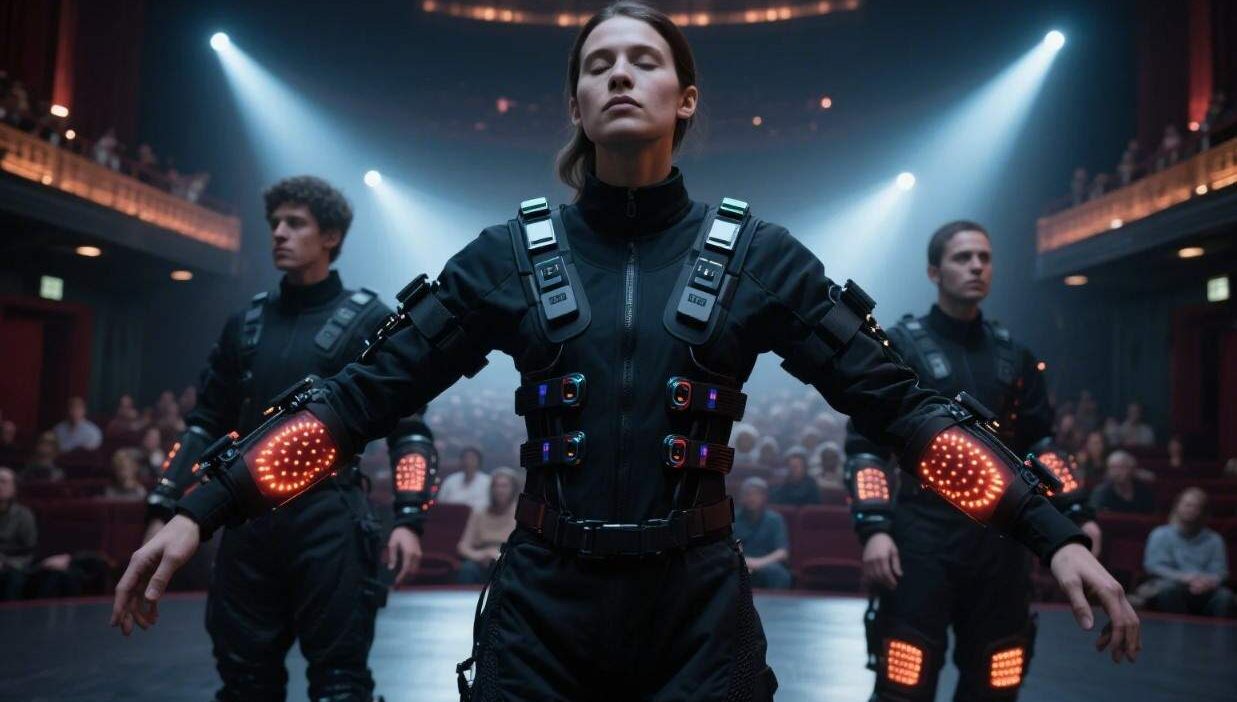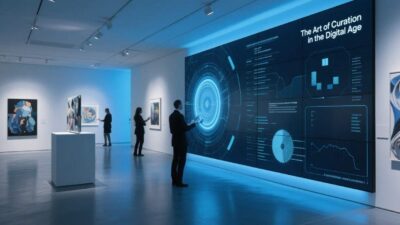The Next Frontier of Immersive Theater
Theater has always been about connection—drawing audiences into a narrative through sight, sound, and emotion. But today, a revolutionary technology is pushing this connection to new depths: haptic feedback suits. These wearable devices, equipped with sensors and actuators, deliver tactile sensations (vibrations, pressure, heat, or texture) directly to the body, transforming passive observation into a sensory journey. By merging haptics with live performance, theaters are redefining immersion, making stories not just seen or heard, but felt. This report explores how haptic feedback suits are reshaping theater, their applications, and the future of sensory storytelling.
What Are Haptic Feedback Suits?
Haptic feedback suits are advanced wearable devices designed to simulate physical sensations. At their core are three components:
- Sensors: Track the wearer’s movements, environment, or biometric data (e.g., heart rate) to trigger responses.
- Actuators: Generate tactile feedback via vibrations (vibrotactile), pressure pads, thermal elements (heating/cooling), or microfluidic systems (simulating textures like fabric or water).
- Software: Processes real-time data to deliver contextually relevant feedback, often synced with audio/visual cues in a performance.
For example, a suit might vibrate gently when a character’s hand brushes against the audience member’s arm, or pulse warmly to simulate the glow of a campfire. These suits range from lightweight, flexible designs (for stage use) to more robust systems (for film or VR integration).
How Haptics Transform Immersive Theater
Traditional theater relies on imagination, but haptic feedback bridges the gap between the abstract and the physical. Here’s how it enhances the experience:
1. Heightened Emotional Engagement
Haptics create visceral, memorable moments that linger long after the performance. For instance:
- A horror play might use sudden, sharp vibrations to simulate a monster’s claws grazing the audience’s backs, amplifying fear.
- A romantic scene could feature soft, rhythmic pulses matching a character’s heartbeat, deepening intimacy.
A 2023 study by the Journal of Interactive Media found that audiences exposed to haptic feedback reported 40% higher emotional engagement compared to traditional theater.
2. Accessibility for Diverse Audiences
Haptics make theater more inclusive:
- Visually Impaired Patrons: Tactile cues (e.g., vibrations guiding movement) replace visual storytelling, allowing blind or low-vision audiences to “experience” the narrative.
- Neurodiverse Audiences: Predictable, consistent haptic feedback (e.g., steady pulses) can soothe anxiety, making performances more accessible to those with sensory sensitivities.
3. Innovative Storytelling
Playwrights and directors are reimagining narratives with haptics as a storytelling tool:
- Historical Reenactments: A play about ancient warfare might use rumbling vibrations to simulate cannon fire, or rough textures to mimic the feel of chainmail.
- Sci-Fi/Fantasy: A sci-fi drama could employ cooling sensations to evoke outer space, or warm waves to simulate a character’s connection to a magical element.
Applications: From Stage to Screen
Haptic feedback suits are already being tested in experimental theater, with promising results:
1. Experimental Theater Productions
- The Tactile Odyssey (2022): A play about space exploration used haptic suits to simulate zero-gravity (via floating actuators) and alien textures (e.g., slimy, prickly surfaces). Audience members reported feeling “transported” to another world.
- Echoes of the Past (2023): A historical drama about a family during WWII used vibrations to mimic footsteps, door slams, and even the rumble of bombs, making the past feel immediate.
2. Interactive Performances
Some theaters are blending haptics with audience participation:
- Choose Your Adventure Theater: Audiences wear haptic suits that vibrate to guide choices (e.g., a gentle nudge toward the left for a “peaceful” path, a sharp pulse for a “dramatic” one).
- Immersive Musical Theater: Singers’ voices are paired with haptic feedback—soft hums vibrate lightly, while loud crescendos pulse strongly—letting audiences “feel” the music.
3. Film and TV Integration
While primarily a theater tool, haptic suits are being explored for film screenings. For example, a horror movie might sync vibrations to jump scares, or a romance might use warmth to mirror a character’s emotions.
Benefits: Beyond Entertainment
Haptic feedback suits offer transformative benefits beyond mere “wow factor”:
- Emotional Depth: By triggering physical reactions (e.g., goosebumps, relaxed muscles), haptics make stories more relatable and impactful.
- Educational Value: Museums and historical sites use haptic suits to teach about artifacts (e.g., feeling the texture of ancient pottery) or events (e.g., simulating an earthquake’s rumble).
- Creative Freedom: Directors and designers are no longer limited to visual/auditory cues—they can craft multi-sensory narratives that engage the entire body.
Challenges and Considerations
While promising, haptic feedback suits face hurdles:
1. Technical Limitations
- Latency: Delays between a performance cue and haptic feedback (even milliseconds) break immersion.
- Comfort: Rigid actuators or bulky suits can distract audiences; lightweight, flexible materials (e.g., graphene-based sensors) are critical.
- Power: Long performances require high-capacity batteries, adding weight and cost.
2. Creative Complexity
Designing meaningful haptic cues is an art. For example, a vibration too subtle may go unnoticed; one too strong may overwhelm. Playwrights must balance feedback with the story’s tone.
3. Accessibility and Cost
High-quality haptic suits are expensive (ranging from 50,000), limiting access for small theaters or independent artists.
The Future: Haptics as a Standard in Theater
Innovations are addressing these challenges:
- AI-Driven Adaptation: Machine learning could analyze audience biometrics (e.g., heart rate) to adjust haptic feedback in real time, personalizing the experience.
- Lightweight Materials: Advances in flexible electronics (e.g., nanotechnology) will make suits thinner, softer, and more comfortable.
- Democratization: Open-source haptic platforms (e.g., Haptic Lab) are lowering costs, enabling smaller theaters to adopt the technology.
Feeling the Future of Theater
Haptic feedback suits are not just a gimmick—they’re a revolution in how we experience stories. By adding a physical dimension to theater, these devices make narratives more immersive, inclusive, and emotionally resonant. As technology advances, haptics will transition from experimental to mainstream, transforming theaters into spaces where every seat feels like the center of the action.
The future of theater is here—and it’s tangible.



